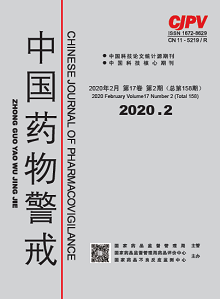|
|
Bioassay on Aquatic Extract of Processed Radix Aconiti Carmichaeli
LIU Lei, ZHANG Qiongling, WANG Jiyong, DING Shilan, YOU Yun, XIAO Suping
2020, 17(2):
75-80.
DOI: 10.19803/j.1672-8629.2020.02.03
Objective To set up the bioassay method for aquatic extract of Processed Radix Aconiti Carmichaeli as the supplementary quality control by its toxic effect on rat myocardial cells H9c2. Methods Aquatic extracts of Processed Radix Aconiti Carmichaeli were provided by China National Traditional Chinese Medicine Co., Ltd. with the batch numbers of HSPYN, HSPSXHZ, HSPSCJY, and HSPSCJY1 separately. The optimized experimental conditions were investigated from the points of cells seeding density, action duration, concentration-response relationship, precision and repeatability test. The growth curve of H9c2 cardiomyocytes was measured by the CCK-8 method to find the optimal cell density and drug action time; and the concentration-response relationship of Processed Radix Aconiti Carmichaeli on cardiomyocytes vitality was determined too. Toxicity evaluation of four batches of Processed Radix Aconiti Carmichaeli was performed and repeated for at least 5 times to determine the dose limit and toxic effect range. Results Batch of HSPYN was used to do the methodological investigation. The cell density was chosen as 5.0×104/ mL and 100μL was seeded in 96-well plates,and the drug action time of 12h showed more stable effects. With the concentrations at 15.6, 31.3, 62.5, and 125.0 μg•mL-1 of Processed Radix Aconiti Carmichaeli, the inhibition rates on H9c2 vitality were 24.5±3.4%, 26.9±6.2%, 27.3±8.8%, and 39.5±11.3% respectively. The main component of Processed Radix Aconiti Carmichaeli, neoaconitine (100 μg•mL-1) was selected as a positive control, and the inhibition rate ranged from 24.6% to 32.4%. With the precision and repeatability of bioassay experiments on all the four batches carried out, it was determined that the inhibition rate on cardiomyocytes vitality was stable within the range of 21.4±1.9% at the concentration of 15.6 μg•mL-1. Conclusion Associated with the clinical indications and toxicity of Processed Radix Aconiti Carmichaeli, its inhibited effect on cardiomyocytes viability might be used as an indicator for bioassay as the supplementary quality control. The testing sample with concentration of 15.6 μg•mL-1 with inhibition rate above 20.0% might be judged as qualified.
References |
Related Articles |
Metrics
|
